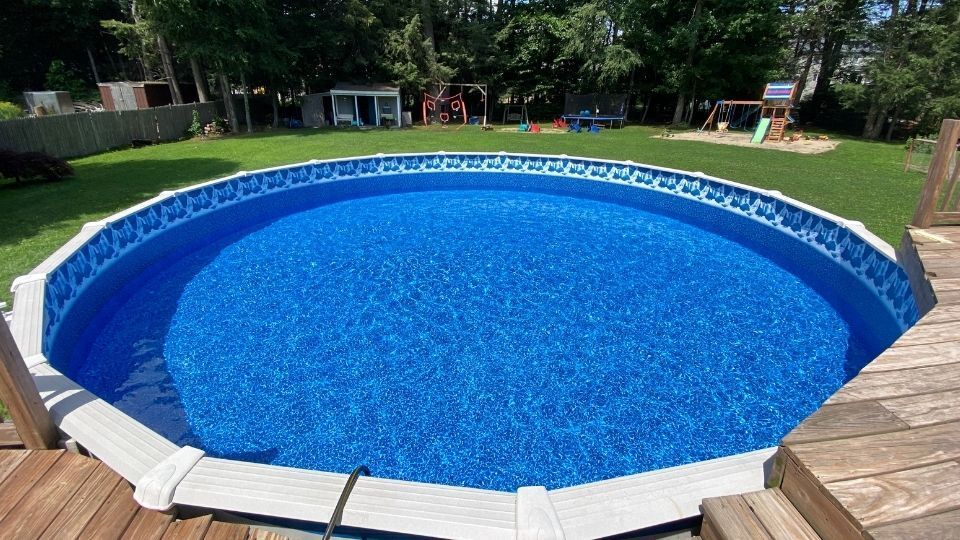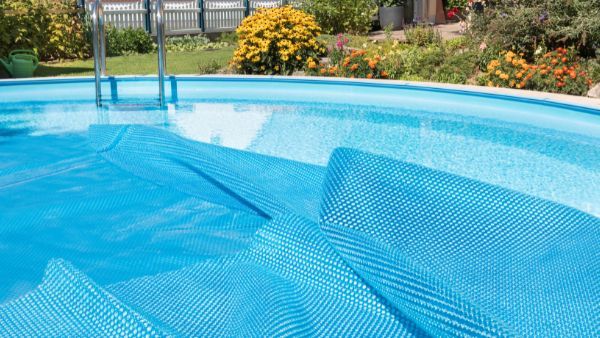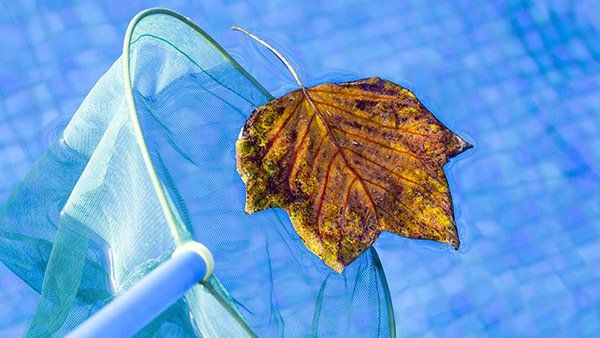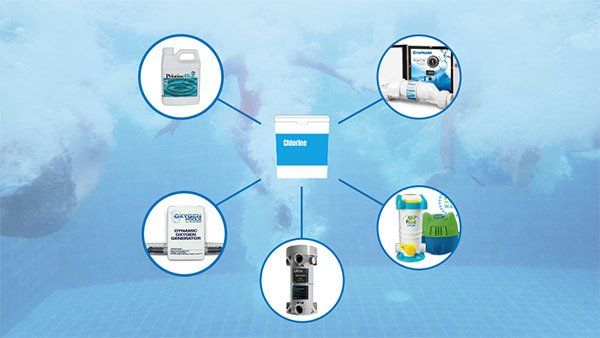How to Open an Above Ground Pool in 10 Steps
Spring is a glorious time of the year, especially if you own a swimming pool. As a pool owner you have probably been waiting for this time since you closed your pool for winter. If this is your first spring as a new pool owner, you might be wondering how to open an above ground pool.
Before we start jumping into the step-by-step process let’s quickly go over the best time to open your pool and the things you need to make this job easier.
When is the Best Time to Open An Above Ground Pool
If you live in a four-season climate area like New England, you have to close your above ground pool for winter. When Spring comes new pool owners often ask when they can open their pool. If you open it early you have the additional cost of maintenance before it’s warm enough to swim.
On the other hand, if you wait too long your pool cover traps heat, algae will start growing in your pool, and it will be more expensive to clear up the water. A good rule of thumb to open a pool in the Spring is when temperatures are consistently above 70 degrees Fahrenheit.
Things You Need to Open an Above Ground Pool
- A sump pump
- A skimmer net and pole
- A pool brush
- A vacuum head
- A vacuum plate
- A vacuum hose
- Start-up chemicals
- Some basic tools (nut driver and phillips head)
Now that you have everything you need let’s get started.
1. Clear Off Leaves and Water from Your Winter Cover
Over the winter a lot of debris and water collects on top of your winter cover. Before you can open your pool, you need to pump the water off your cover and remove the leaves.
Attach your vacuum hose to the sump pump and submerge it in the water on your cover. While the water is pumping out start fishing out some of the leaves with the skimmer net.
2. Remove the Winter Cover
Now that you have cleared off your cover it’s time to pull it off your pool. You might want to ask a friend to help you with this but if you remove it by yourself, we suggest you use some clips.
Try to avoid letting the cover fall in to prevent debris and dirt from dropping into your pool water. If you used a pool pillow remove that as well, deflate it, and store it with your cover.
Once the cover is removed lay it out, rinse it off and let it try completely before storing it. When storing your pool cover make sure to keep it in a dry space that mice don’t have access to.
3. Install Your Equipment
Reinstall Pump and Filter Plugs
Before connecting the equipment open the pump lid and remove all the plugs stored during winter. There should be two plugs, a small plug for the pump and a bigger plug for the filter. If you have a sand filter, there should be an eye glass that connects to the side of the filter. Reinstall all the plugs.
Suggestion: Using some O-ring lube helps prevent the rubber rings from cracking and prevent leakage.
Connect Your Pump and Filter
Now you are ready to connect your pool equipment. The skimmer gets connected to the pump using a filter hose. The pool pump connects to the filter either via another filter hose or through a direct connection.
If you have a heater or chlorinator, connect it between the filter and return. If you don’t have either just simply connect the filter to the return.
Next connect your grounding wire to the pump. The grounding wire is a small metal wire that wraps around your pool and keeps you safe while swimming.

4. Remove Winterizing Plates and Plugs
Before you get too excited and hit the on switch on your pump, remove all the winterizing plates and plugs on the pool skimmer and return so the water can flow through.
5. Add Water If Needed
This step is necessary if your pool water is below the skimmer. Using your garden hose add water till it reaches the middle of the skimmer.
6. Start Up Your Pool System
Time to start up your system! After everything is installed, turn on your pump and check to make sure water is pulling through into the filter and gets pushed out of the return.
Sometimes pumps need to be primed if it doesn’t pull the pool water through. You can tell by looking through the clear pump lid. If the water is swooshing around and the pump basket is not completely filled with water, it needs to be primed.
All you do is shut off the system, open the pump lid and add water to the pump using a garden hose or a bucket. Then close the lid and start up the system again. This should help the pump pull water through.
If you have a diatomaceous earth (D.E.) filter you have to add some D.E. powder to the skimmer to help coat the filter. The label on the filter will tell you how much to add.
Important: Leave your pump running for 24 hours when opening your pool and make sure to clean the filter often as a lot of debris will be filtered out in the beginning.
And voila! Your pool is running! But wait the job is not done yet.
7. Clean Your Pool
Now that your pool is running it’s time to clean it because chances are your pool is not crystal clear. Maybe it’s even completely green or brown and you can’t see the bottom. If that’s the case, try to scoop and clean as best as you can.
Wait till the shock has cleared up enough for you to see the bottom. Then use the skimmer net to scoop some of the debris before vacuuming it manually. Hold off on brushing yet, you will see why in a minute.
8. Reinstall Pool Accessories
If you haven’t done so yet, you can install all your pool accessories such as your pool ladders, steps, diving boards, or whatever else.
9. Add Your Start-Up Chemicals
Finally, it’s time to add your start up chemicals. Add 2lbs of granular shock or 2 gallons of liquid shock per 10,000 gallon of pool water. We recommend shocking the pool before balancing it because if you shock it after it can throw off the balance and you have to balance again.
Also add 1 gallon of algaecide. Once those are added you can then brush the walls and bottom to loosen up all the algae and to help mix the chemicals around.
10. Balancing Your Pool Chemicals
After 24 hours test your pool water to find out what else you need to balance your pool. If you are unsure about how to test and balance your water, you can always bring a sample to your local pool store. They will be able to tell you exactly what you need.
There are many steps involved in opening an above ground pool and sometimes it can get a little overwhelming. If you are a new pool owner and still unsure about the process, we recommend that you hire a professional to open your pool.
Family Pools North is always happy to help, contact us or visit our store at 3 Newton Junction Road in Kingston, NH.
Download Our FREE Above Ground Pool Opening Checklist
Add your email and we will send the checklist right to your inbox.





